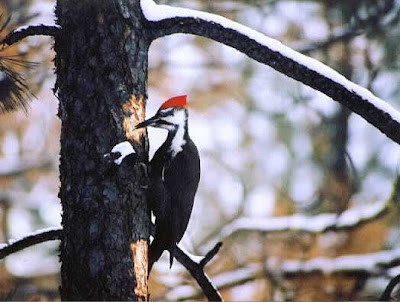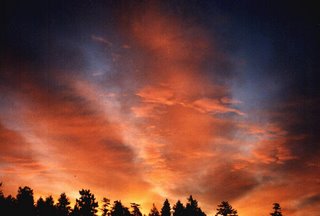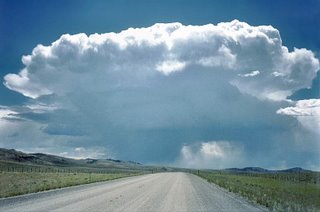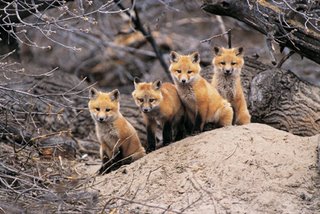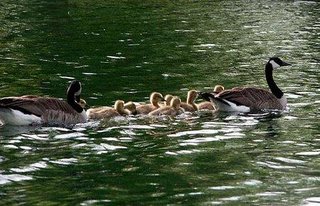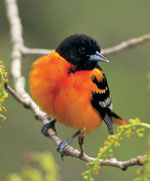"The sad part about life at this point is there's no horizon; the horizon is the cemetery. You always remember the fun things you do with your family."Ike Joles
As the picture indicates, it's starting to look like winter out the backdoor. This morning there was no snow and now the ground is starting to get covered and the wind is blowing from the east -- an "ill wind," as we say around here. I see the snowmobile markers are staked out in the nearby fields and by tomorrow morning the sound of snowmobiles may echo in the neighborhood -- it the weather forecasts are correct. That means I maybe able to get the cross-country skis out, after the shovelling and snow blowing gets done.
The picture is the first one I've actually transferred from my digital camera to my computer to this blog site. I've had the camera for about four years. I inherited it from my Dad who received it from us as a Christmas present in 2002. He died in 2003. I finally figured out how to work the thing this summer and now -- with the snow falling -- I finally moved the picture to my PC. I one point in life, I could take picture with a 35mm camera, develop them in a darkroom and print them in a processes that involved the use of chemicals and darkness and the danger of overexposure that could take and hour or two. Today it's point the camera, push the button, plug the chord from the camera to the computer and unload the picture to the blog. Takes about 5 minutes with no smudge or cleanup.
Before the snow got going this morning, I headed to town for my Saturday routine. Having breakfast at the local cafe, I came across an interesting story in The Country Today newspaper about a guy name Ike Joles. Joles now lives in Luck and spent the first few years of his life living in a tent with his family back in the 1920s. Spending his early childhood living in a tent gave him a great perspective and the realization that material possessions don't matter.
This story made me think of how times change and the lessons we get passed do to us from our fathers change with those times. Times have definitely changed and we've gained more gadgets that we know what to do with. We might know how to program a cellphone but we are clueless as to how to fix it when it breaks. But then again, why fix it when you can toss it away and get an updated version that is slimmer, more complicated and fashionably cooler for half the price of the old one. Practical knowledge has been been tossed into the ditch somewhere along the information superhighway.
At the age of 52 and an avid music fan, I've traversed through a progressive mazes of recorded music options. It started 1964 with me spending my paper route money to buy a "45" of Jan and Dean's "Dean Man's Curve." I moved into LPs with the purchase of Credence Clearwater Revival's "Green River" in 1969. Then there were 8-tracks, cassettes and reel-to-reels and now CDs. I do know there are MP3 players, but I haven't got there yet...and may never get there.
Recently while browsing for CDs at Wal-Mart, a middle aged man asked the kid working if they carried tape for reel-to-reels. The kid said, "you mean like cassettes?" A nearby manager stepped up and volunteered that he'd heard of reel-to-reels before but had never actually seen one and had no idea where you could get tape for them. It's rather humbling to think that in the late 1960s and well into the 1970s reel-to-reels where a symbol of high-tech savvy. But then again, in the late 1960s, having an actually stereo was pretty cool. Cars had AM radios and then came FM and now there's satellite radio.
And the day the Joles family tent caught fire and everything burned, Ike Joles said, "The old man stood there and cried like a baby." Today, he could have got a much better one on sale at Wal-Mart, charged it on the credit card and worried about paying for it some other day. And in 1930, my Grandma used to walk to job that she got paid in chickens. She couple cook from scrath, knit, sew, can everything, fish and shoot a gun. Grandpa caught a huge catfish on the st. Croix that fed the family for a couple of weeks. He built the boat he fished in and the rod he caught the fish on.
Today, people are afraid to drive from New Richmond to Hudson without a cellphone -- in case something happens. And so it goes...
Humble beginnings
Born and raised in a tent, Luck man has led adventurous lifeby Heidi Clausen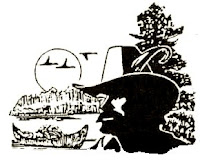
LUCK - From his birth in a tent somewhere outside St. Louis, it seems Ike Joles Jr. was destined to lead an adventurous life.
Out of that humble beginning came an entrepreneuring spirit that has served him well throughout his life.
Mr. Joles, 83 and living in Luck with Florence, his wife of more than 60 years, has been known to try almost anything once.
For decades, he and his family made a living selling medicinal herbs picked from here to Florida and Christmas trees cut by hand from northern Wisconsin woods.
Over the years, he also served in two wars, worked as a landscaper, owned a bait shop, managed a hardware store, ran a youth Bible camp and worked as a newspaper printer, among other titles he's held.
But life hasn't been all work and no play.
Read more @
The Country Today.






